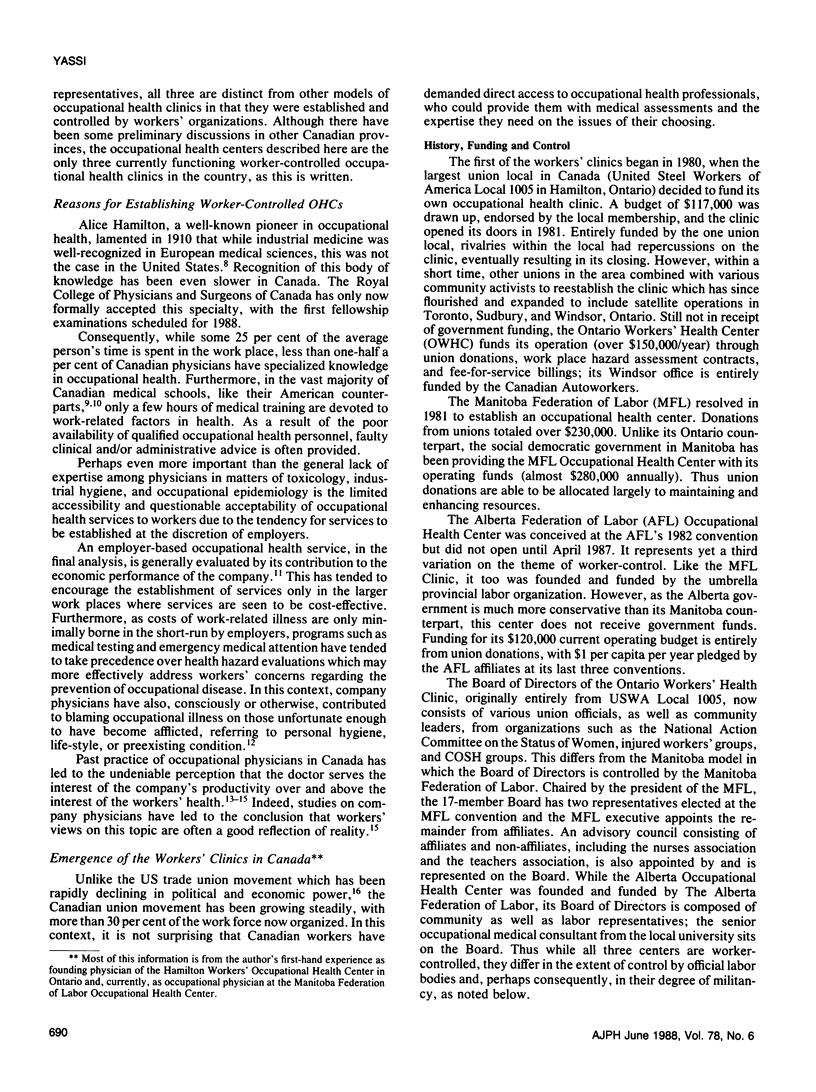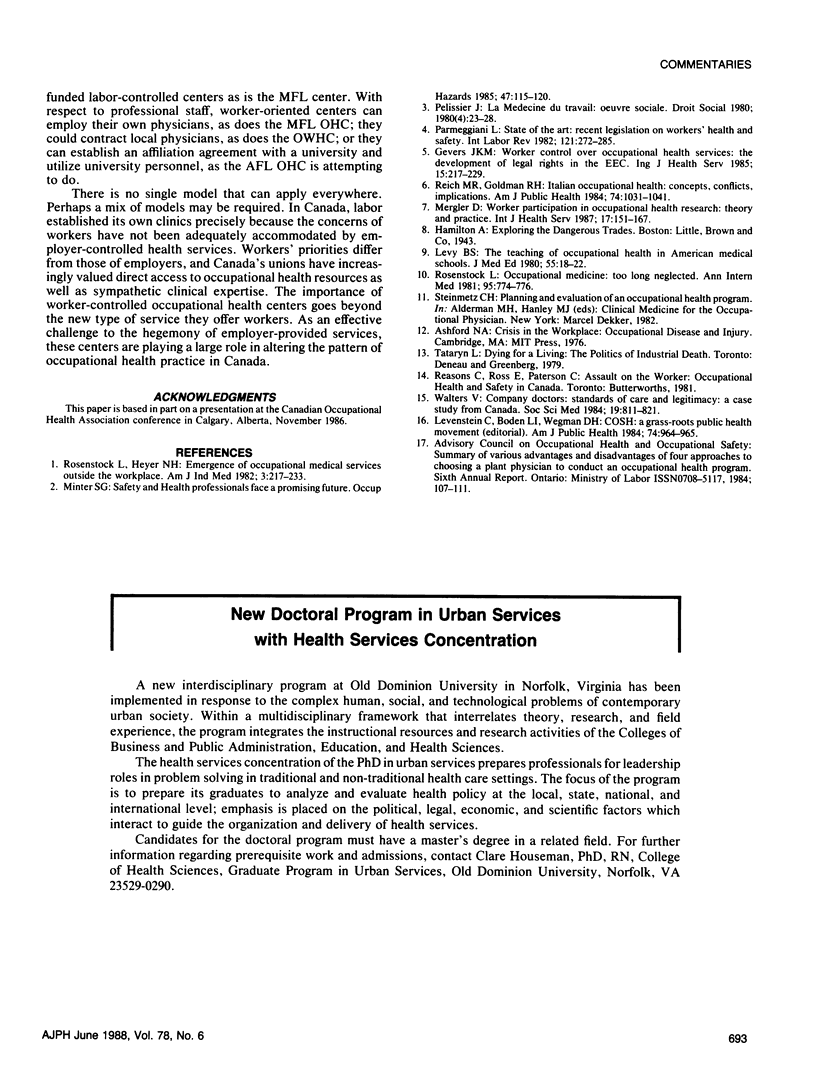Abstract
Over the past decade worker-controlled occupational health centers have been established in three Canadian provinces. This development has been a response to the slowness in recognizing occupational medicine in the Canadian medical community, the limited availability and questionable acceptability of existing services, as well as the growth of worker control in occupational health matters generally. The history, funding, organizational structure, personnel, resources, and programs of these worker-controlled centers are outlined, illustrating the extensive programs that can be provided despite small budgets of these operations. Advantages to workers include direct access to resources as well as expert professional advice with the focus on work place hazards. Furthermore, the centers provide for extensive interaction among workers on their common concerns. Disadvantages of the model include restricted access to work places associated with frequent distrust of employers. Employer-based and university-based models are compared to worker-controlled centers, and it is suggested that the latter may influence the pattern of practice of occupational health as well as the ability of workers and their unions to promote improved occupational health and safety conditions.
Full text
PDF




Selected References
These references are in PubMed. This may not be the complete list of references from this article.
- Gevers J. K. Worker control over occupational health services: the development of legal rights in the EEC. Int J Health Serv. 1985;15(2):217–229. doi: 10.2190/B5JK-7FCJ-MDNU-HDCX. [DOI] [PubMed] [Google Scholar]
- Levenstein C., Boden L. I., Wegman D. H. COSH: a grass-roots public health movement. Am J Public Health. 1984 Sep;74(9):964–965. doi: 10.2105/ajph.74.9.964. [DOI] [PMC free article] [PubMed] [Google Scholar]
- Levy B. S. The teaching of occupational health in American medical schools. J Med Educ. 1980 Jan;55(1):18–22. doi: 10.1097/00001888-198001000-00002. [DOI] [PubMed] [Google Scholar]
- Mergler D. Worker participation in occupational health research: theory and practice. Int J Health Serv. 1987;17(1):151–167. doi: 10.2190/FPWF-C2ET-Q4DB-NMNQ. [DOI] [PubMed] [Google Scholar]
- Reich M. R., Goldman R. H. Italian occupational health: concepts, conflicts, implications. Am J Public Health. 1984 Sep;74(9):1031–1041. doi: 10.2105/ajph.74.9.1031. [DOI] [PMC free article] [PubMed] [Google Scholar]
- Rosenstock L., Heyer N. H. Emergence of occupational medical services outside the workplace. Am J Ind Med. 1982;3(2):217–223. doi: 10.1002/ajim.4700030213. [DOI] [PubMed] [Google Scholar]
- Rosenstock L. Occupational medicine: too long neglected. Ann Intern Med. 1981 Dec;95(6):774–776. doi: 10.7326/0003-4819-95-6-774. [DOI] [PubMed] [Google Scholar]
- Walters V. Company doctors: standards of care and legitimacy: a case study from Canada. Soc Sci Med. 1984;19(8):811–821. doi: 10.1016/0277-9536(84)90398-8. [DOI] [PubMed] [Google Scholar]


